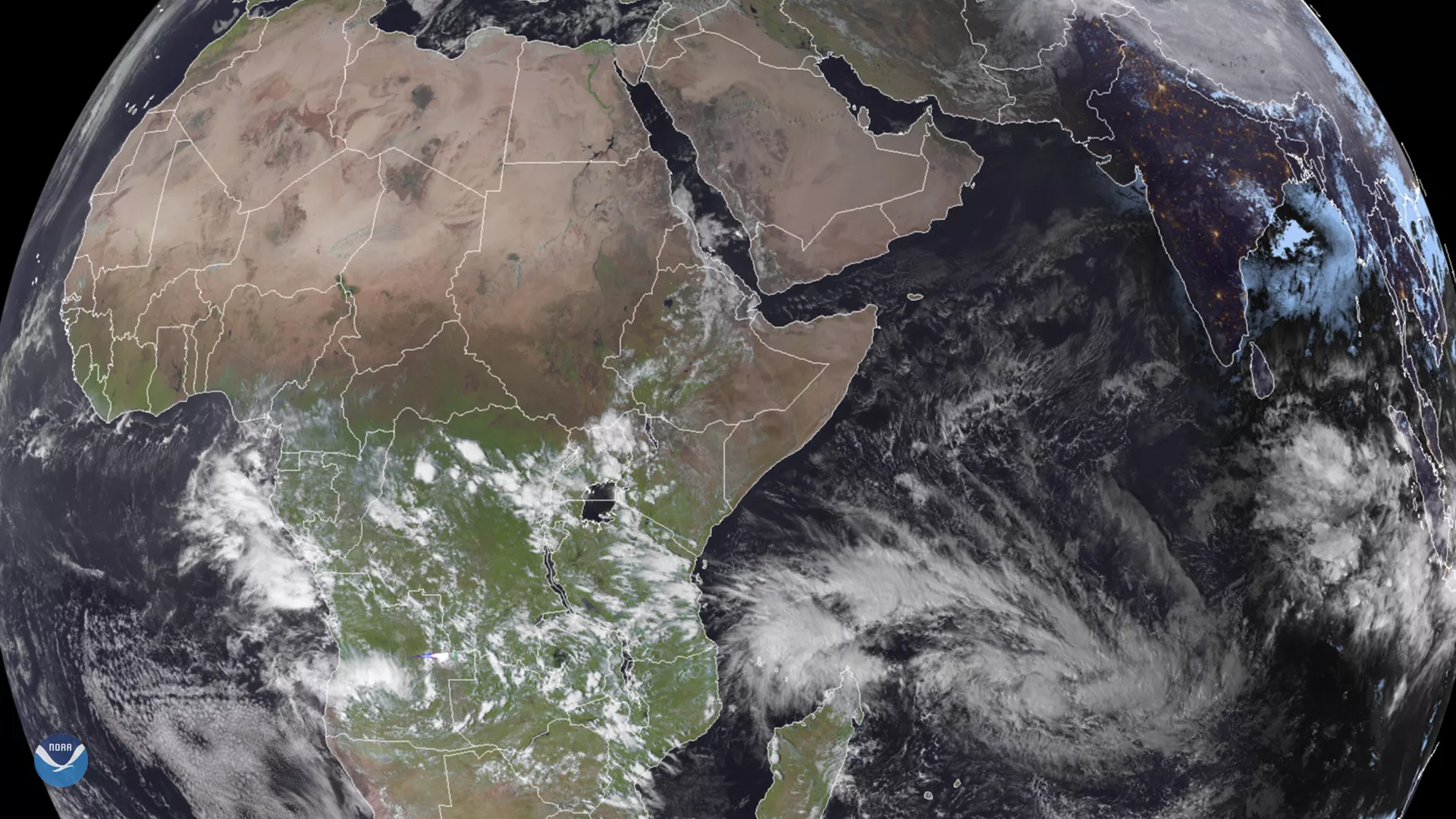February 03, 2020

On Feb. 3, 2020, the Meteosat-8 satellite spied East Africa and an intensifying storm system in the Indian Ocean. According to the World Meteorological Organization (WMO), it is the latest in a series of systems brought on by a weather pattern that has caused excessive precipitation in the region and created a population explosion of locusts that have devastated the region’s harvests. Furthermore, the locust swarms, presumed to originate from the Indo-Pakastani border , have been the largest in 25 years for most of the Horn of Africa and are projected to increase in number until June due to ongoing favorable conditions for breeding.
While the WMO states that “the infrequency and brevity of [most] locust plagues [are] welcome,” it also causes a lack of preparedness for when heavy infestations like the current period occur due to local governments having few staffers with past experience. In the meantime, local governments are working to curtail the locust swarms that threaten food security in the region. Currently, locusts are infesting areas in East Africa as well as around the Red Sea, including Egypt, Yemen, and Saudi Arabia. Additionally, seasonal rainfall is projected to start earlier than usual for most of East Africa, with northern Tanzania, northern Uganda, and parts of Kenya , Ethiopia, and Somalia being especially under threat. WMO meteorologists predict prolonged dry periods in East Africa to punctuate heavy rainfall during the months of March through May.
The IGAD Climate Prediction and Applications Centre (ICPAC), in association with Kenya Meteorological Department (KMD) predict a greater than 70% chance of temperatures being warmer than normal for the Horn of Africa’s coastline and isolated parts of Uganda, Burundi and Rwanda for March-May 2020. Also, scientists from these institutions forecast that flash flooding will hit the region during that time, and will likely affect infrastructure and livelihoods. They urge stakeholders to respond by “remain[ing] vigilant and implement[ing] the required mitigation measures” to combat the unusual climate activity for the area. In the meantime, policymakers in the region are advised by the WMO to prepare for longer locust seasons due to the evolving climate of the area that could enable locusts (which have a life cycle of three to five months) to birth multiple generations within each extended season.
In geostationary orbit at approximately 22,300 miles above the equator, the Meteosat-8 satellite operates over Europe, Africa, and the Indian Ocean. Meteosat-8 (launched from the Guiana Space Centre in Kourou in 2002) is positioned at 41.5 degrees and provides full disc imagery every 15 minutes.It is equipped with the Spinning Enhanced Visible and InfraRed Imager (SEVIRI), which observes the Earth in 12 spectral channels and the Geostationary Earth Radiation Budget (GERB) instrument, a visible-infrared radiometer for monitoring the amount of radiation on Earth. Meteosat-8 is one of four geostationary satellites operated by EUMETSAT (European Organisation for the Exploitation of Meteorological Satellites).